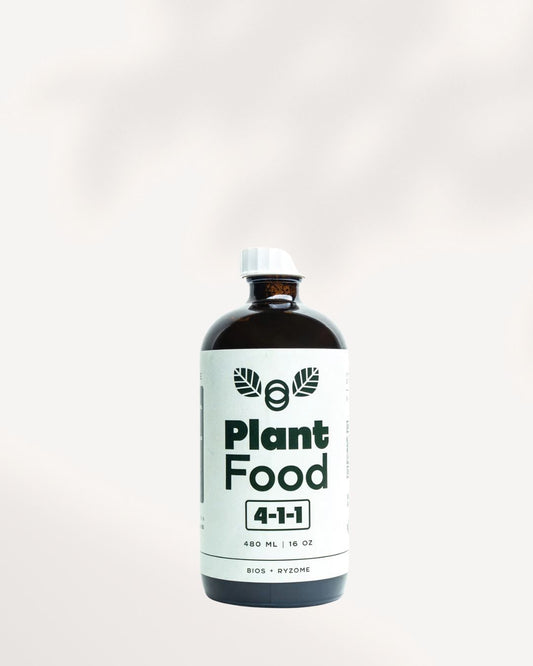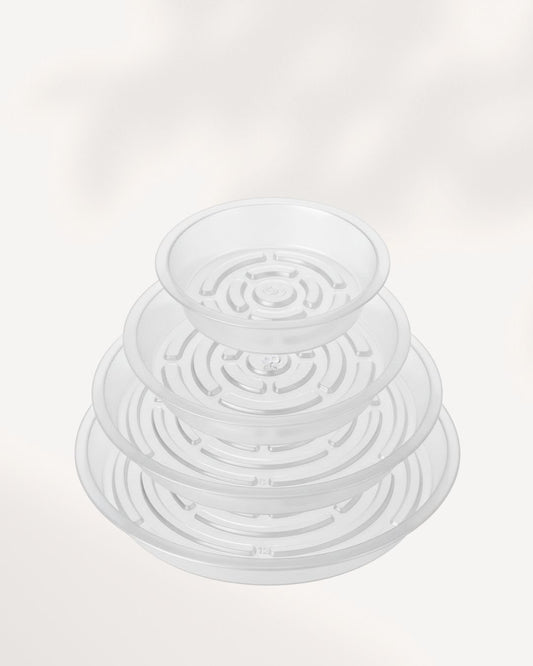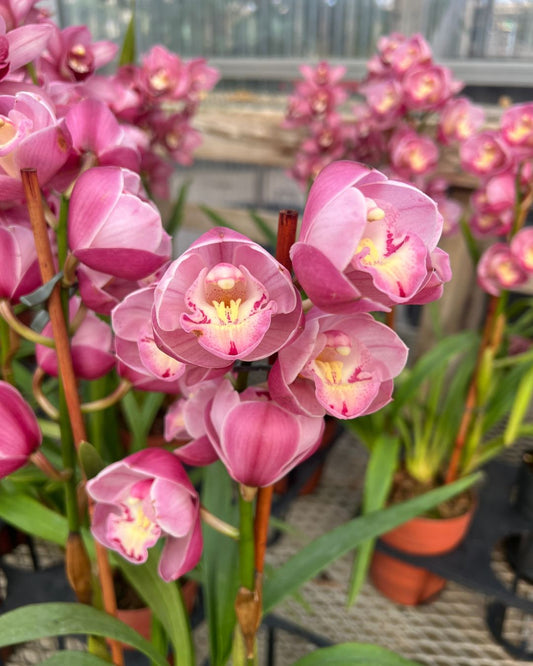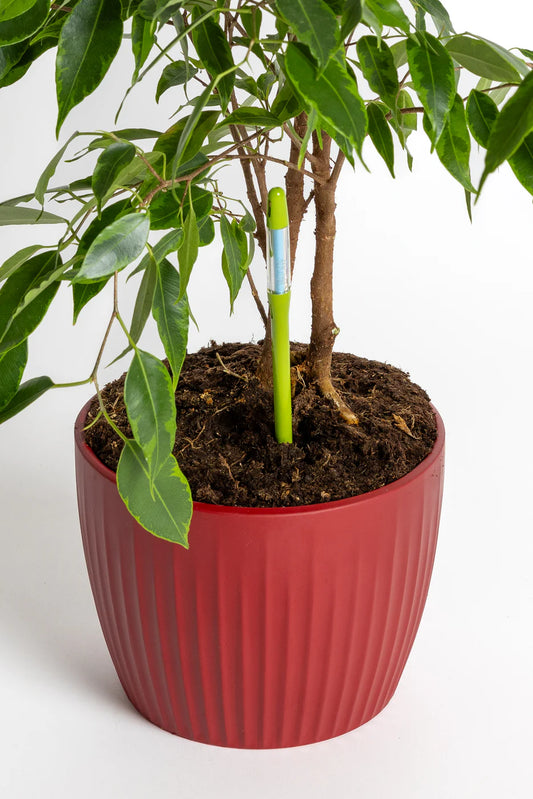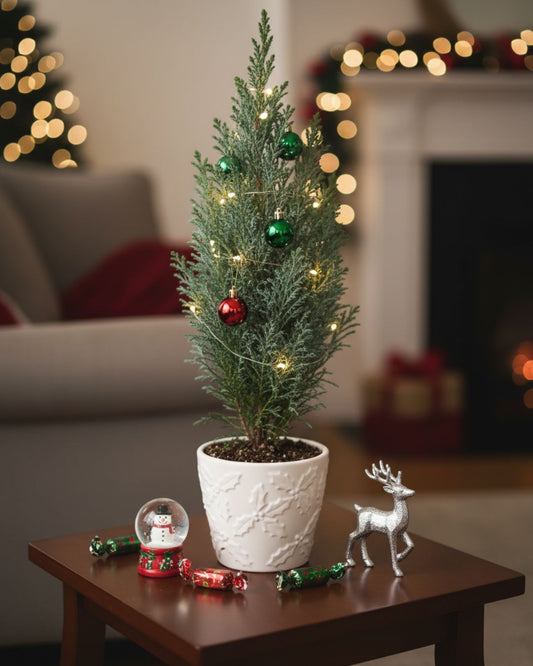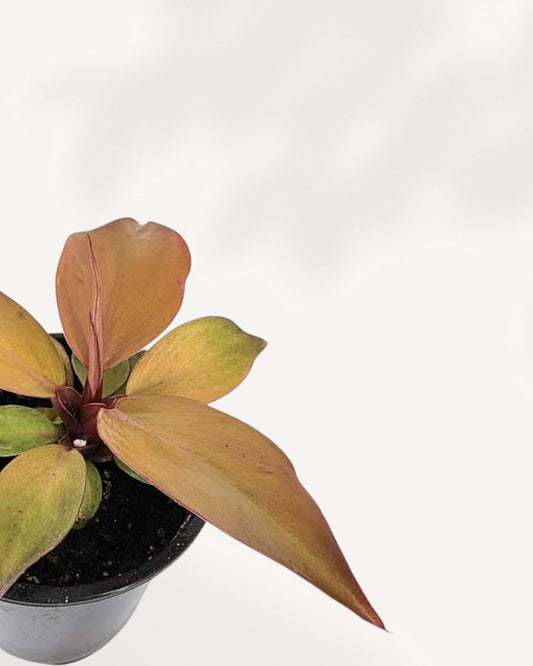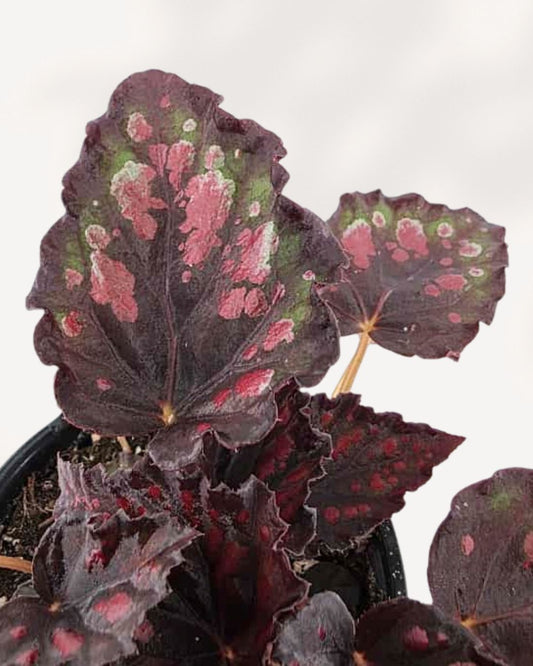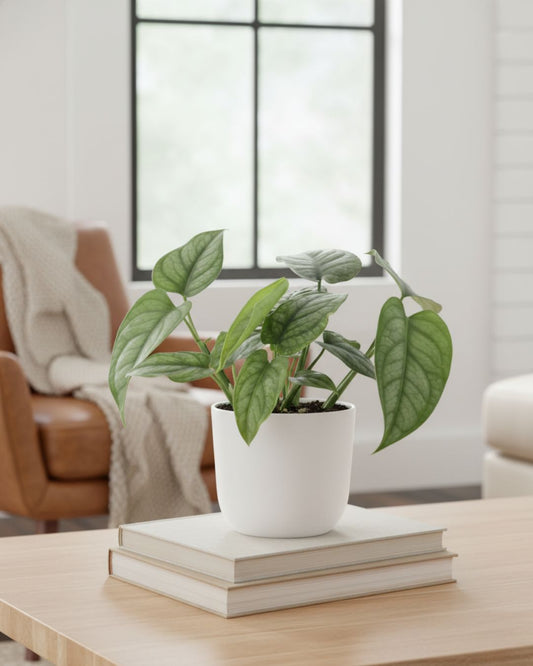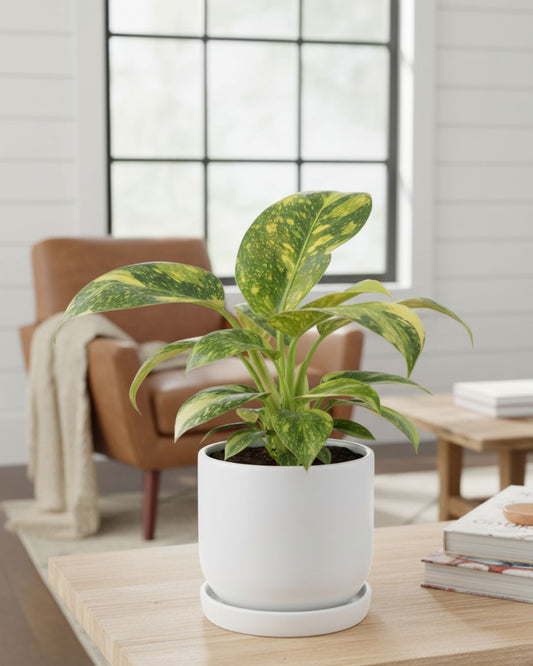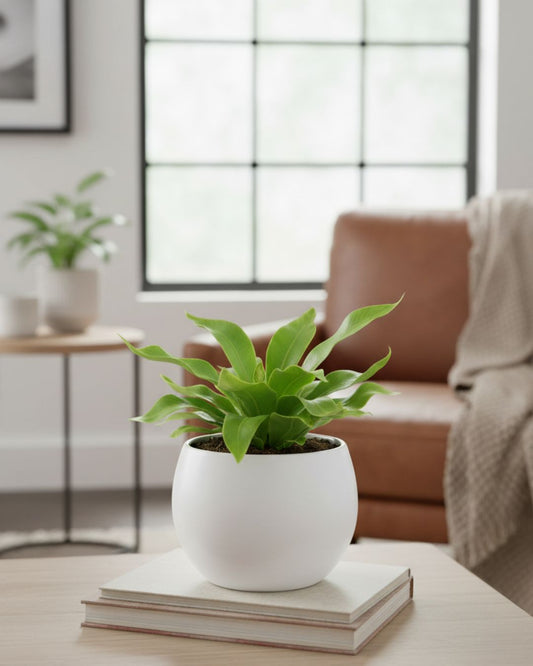Nephthytis Plant Care: Everything You Need to Know
| Back to Library |
Exhausted because your Nephthytis Plant leaves are drooping, the growth seems slow, or you are unsure about the right watering? Worry not! We are here to help.
It is an easy-care and luxurious-looking plant, making it an ideal addition to your home. With the right care tips and little attention, your Nephthytis Plant can flourish and become vibrant.
This guide will provide you with everything you need to know, from light requirements and watering tips to soil preferences. Moreover, we will also discuss the common problems of Nephthytis Plant care and their solution.
So, let’s get your plant back on track!
Part 1: How to Take Care of Nephthytis Plant Care?

Taking care of the Nephthytis Plant is actually easy. It is a low-maintenance plant, perfect for busy plant lovers. However, proper care and a good environment are important. The Nephthytis plant is naturally found in tropical rainforests. Let’s have a quick look at these care tips:
- Place the Nephthytis Plant in bright, indirect light for optimal growth.
- Water when the top layer of the soil feels dry, but avoid overwatering.
- Maintain moderate humidity levels and keep the plant at a temperature between 60°F and 85°F.
- Wipe leaves regularly to remove dust.
- Repot every 1-2 years or when the plant outgrows its container.
Let’s have an overview of this plant first.
Overview of Nephthytis Plant Care
|
Characteristic |
Details |
|
Common Name |
Arrowhead Plant, Goosefoot Plant, Nephthytis |
|
Botanical Name |
Syngonium podophyllum (Note: While "Nephthytis" was historically used, Syngonium podophyllum is the currently accepted botanical name.) |
|
Family |
Araceae |
|
Plant Type |
Evergreen vine or groundcover (depending on how it's grown) |
|
Mature Size |
Varies greatly: 6-10 feet as a vine, or smaller as a groundcover/houseplant. Pot size significantly impacts indoor size. |
|
Sun Exposure |
Bright, indirect light to partial shade |
|
Soil Type |
Well-draining potting mix |
|
Soil pH |
Slightly acidic to neutral (around 6.0-7.0) |
|
Bloom Time |
Rarely blooms indoors; if it does, it's usually in mature plants. |
|
Flower Color |
Small, greenish-white spathe and spadix (not showy) |
|
Hardiness Zones |
USDA Zones 10-12 (often grown as a houseplant in other zones) |
|
Native Area |
Tropical America (from Mexico to Ecuador) |
|
Toxicity |
Toxic to dogs, cats, and horses |
Before discussing the care tips for your Nephthytis Plant, visit our Nephthytis plant product page to bring this beautiful plant into your home.
Now, let’s discuss the care tips to keep your Nephthytis Plant healthy and thriving.
Care Tips:
These are essential care tips for the Nephthytis Plant that you should keep in mind for a smooth planting experience:
Light:
Nephthytis plants thrive in a variety of lighting conditions. They require bright, indirect light or partial shade for optimal growth. Too much exposure to direct sunlight can burn its leaves and cause discoloration. The color variations, other than green, can tolerate some direct sunlight. Put your plant near a window that faces east or north.

Warning: Avoid direct sunlight, as it can cause the leaves to bleach and damage.
Watering:
In spring and summer, keep your soil regularly moist and humid. Don’t let the soil become soggy. Water your Nephthytis plant when the top of the soil feels dry to the touch. Drain the excess water and monitor the moisture level to ensure it remains optimal. Reduce watering in winter as the plant grows slowly.

Pro Tip: Check the soil regularly with a moisture meter. It helps avoid overwatering or underwatering.
Soil:
Use a well-draining soil-based potting mix. For better drainage, add perlite or vermiculite. You can also add organic materials such as peat or compost to the soil. Insufficient drainage can cause root rot in Nephthytis plants.
So, explore a variety of high-quality, well-draining soils and fertilizers by clicking here.

Temperature and Humidity:
Nephtytis plants thrive in warm and humid climates, as they are tropical. Maintain temperatures between 60°F and 85°F (15 °C and 29°C). Keep your plant in places with medium to high humidity. You can increase humidity levels by misting the leaves or using a humidifier.

Fertilizer:
Fertilize your Nephthytis plant once every two weeks during the spring and summer seasons. Avoid fertilizing in winter, as the plant’s growth slows.

Pro Tip: Select the ideal fertilizer from our 2025 Indoor Plant Fertilizer Buying Guide.
So, these are the secret care tips to keep your Nephthytis Plants beautiful and thriving.
Don’t forget to check out our low-light plants that can fit any space in your home.
Want to grow more Nephthytis Plants? Let’s see how to propagate them so you can enjoy as many as you want.
Part 2: How to Propagate Nephthytis Plant Care?
Propagating the Nephthytis plant enables you to expand your collection quickly. You can also surprise your family and friends by gifting this vibrant plant with gorgeous leaves.
As you know, propagating requires time and patience, but it is a simple process.
Let’s explore the step-by-step guide to propagating your favorite plant:
Step-by-Step Guide:
Step 1: First, choose a healthy, disease-free, and clean stem from your Nephthytis Plant. Then, carefully cut off the stem about 4-6 inches long.

Note: Use a clean and sharp knife or pruning shears for cutting.
Step 2: Place your cuttings in room-temperature water in a glass. Store it in a warm, humid location, and keep it in bright, indirect light. The new roots begin to emerge within a few weeks.
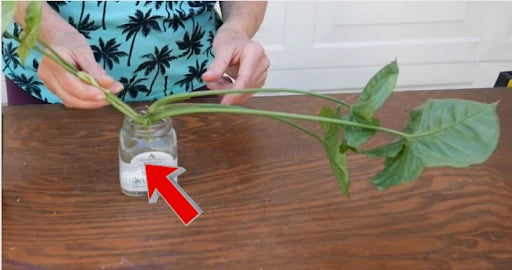
Pro Tip: The best place to put your cuttings is a bright location with indirect sunlight.
Step 3: Keep adding water to the glass as needed.

Step 4: You don’t need to wait too long, as the roots are very strong; however, it's best to wait at least one month for optimal rooting.
Step 5: Place the cutting in well-draining soil once it is rooted. Water the soil when it feels dry to the touch.

Explore our essential garden tools for easy propagation and maintenance.
Potting and Repotting Nephthytis Plant Care
|
Aspect |
Potting |
Repotting |
|
Soil |
Use a well-draining potting mix with peat, perlite, and compost. |
Refresh soil with a similar well-draining mix to maintain nutrients. |
|
Pot Size |
Choose a pot slightly larger than the root ball with drainage holes. |
Select a pot 1-2 inches larger in diameter than the current one. |
|
Drainage |
Ensure the pot has drainage holes to prevent root rot. |
Maintain good drainage; avoid compacting the soil too much. |
|
When to Do It |
Pot when propagating cuttings or transitioning from nursery pots. |
Repot every 1-2 years or when roots start circling the pot. |
|
Process |
Place fresh soil in the pot, position the plant, and water lightly. |
Gently remove the plant, loosen roots, trim any damaged ones, and replant with fresh soil. |
|
Aftercare |
Keep in bright, indirect light with moderate humidity. |
Water thoroughly, allow excess to drain, and avoid fertilizing for a few weeks to reduce stress. |
Explore this collection of pots and planters designed for proper drainage to prevent root rot.
Now, let’s learn about different types of Nephthytis Plants.
Part 3: Types of Nephthytis Plant
Syngonium plants, also known as Nephthytis, are popular for their attractive foliage and ease of care, making them a favorite for beginner and experienced plant enthusiasts.
There are various types of Syngonium plants, each with unique characteristics and colors that can brighten up any indoor space.
Additionally, discover how indoor plants can enhance your health by clicking here.
Type 1- Syngonium Confetti Tricolor
The Syngonium Confetti Tricolor is a vibrant, eye-catching plant with variegated pink, green, and white leaves. Its stunning color contrasts make it a perfect decorative piece for indoor spaces. It thrives in indirect light and can adapt to various humidity levels.

Key Features:
- Tri-colored foliage with pink, green, and white hues.
- Low-maintenance and easy to grow.
- Ideal for both beginners and seasoned plant enthusiasts.
Type 2- Syngonium Pink Perfection
Syngonium Pink Perfection showcases soft pink, creamy white, and green shades across its delicate arrow-shaped leaves. This variety is known for its attractive color and graceful appearance, making it an excellent choice for adding elegance to your space. It flourishes in moderate to bright light.

Key Features:
- Beautiful pink and white variegation.
- Easy to care for with moderate watering.
- Works well in hanging baskets or as a climbing plant.
Type 3- Syngonium Pink Splash
The Syngonium Pink Splash features striking pink spots scattered across its green foliage. The colorful pattern adds uniqueness to the plant, making it a standout feature in any collection. It requires medium to bright light for optimal growth.

Key Features:
- Distinctive pink splashes on green leaves.
- Grows well in low to medium light.
- Adaptable to different environments, from home to office settings.
Type 4- Syngonium White Butterfly
The Syngonium White Butterfly has crisp, white-edged leaves that resemble butterfly wings, creating a light, airy feel in any room. This variety thrives in moderate, indirect sunlight and only needs occasional watering to maintain health.

Key Features:
- Elegant white-edged foliage.
- Prefers moderate indirect light.
- Low maintenance with minimal care required.
Type 5- Syngonium Strawberry
Syngonium Strawberry boasts a soft pink and green color mix, resembling the sweetness of strawberries. Its unique aesthetic makes it a perfect decorative addition for homes looking to add a pop of color. This plant prefers medium light and regular moisture.

Key Features:
- Soft pink and green shades.
- Perfect for creating vibrant indoor displays.
- Grows well in average humidity levels.
Type 6- Syngonium Mojito
The Syngonium Mojito features a refreshing mix of green and light yellow tones, resembling the colors of a Mojito drink. Known for its clean and fresh appearance, it is a low-maintenance plant that thrives in bright, indirect light.

Key Features:
- Green and light yellow foliage.
- Excellent for beginner plant owners.
- Thrives in bright, indirect light with minimal care.
Also, check out our air purifying plants to enhance air quality further.
Pro Tip: Place your Nephthytis plant in bright and indirect light with higher humidity levels. Rotate your plant occasionally for even optimal growth.
Part 4: What are the Common Problems of Nephthytis Plant Care?
Nephthytis (Syngonium) plants are relatively easy to maintain, but like any houseplant, they can encounter issues if their care needs are not met. Common problems include leaf discoloration, pest infestations, and growth-related concerns. Below are some frequent issues, their causes, and practical solutions.
Issue 1: Yellowing Leaves
Causes:
- Overwatering, leading to root rot.
- Poor drainage or compacted soil.
- Sudden changes in temperature or exposure to direct sunlight.
Solutions:
- Allow the soil to dry slightly between waterings.
- Use well-draining soil and ensure the pot has proper drainage.
- Keep the plant in a stable, warm environment with indirect light.
Issue 2: Brown Leaf Tips
Causes:
- Low humidity levels.
- Underwatering or excessive fertilizer use.
- Hard water with high mineral content.
Solutions:
- Increase humidity with a pebble tray or humidifier.
- Water consistently, but avoid over-fertilizing.
- Use distilled water or rainwater instead of tap water.
Issue 3: Leggy Growth (Long, Thin Stems with Few Leaves)
Causes:
- Insufficient light exposure.
- Natural growth habit as the plant matures.
- Lack of pruning.
Solutions:
- Move the plant to a brighter location with indirect light.
- Regularly trim stems to encourage bushier growth.
- Provide a moss pole or support for climbing.
Issue 4: Wilting or Drooping Leaves
Causes:
- Underwatering or prolonged dry soil.
- Overwatering, causing root damage.
- Exposure to cold drafts or sudden temperature drops.
Solutions:
- Check soil moisture and water when the top inch is dry.
- Avoid placing the plant near air conditioners, heaters, or drafty windows.
- Repot if root rot is suspected.
Conclusion:
The final remarks are that the Nephthytis plants may face issues while growing, but with the right care tips, you can have a healthy and thriving plant. Ensure a proper care environment, including bright, indirect light, well-draining soil, adequate watering, and warm temperatures.
These are aesthetically pleasing and visually wonderful indoor plants. They are easy to look after and thrive in any corner of your room. Moreover, you can have more of these stunning plants by propagating them. We have discussed the step-by-step guide for this process.
This is the ultimate guide to caring for your Nephthytis plants. Moreover, you can read about and explore our collection of low-light plants for a Pet-Friendly Home.
FAQ's
Are Nephthytis Plants Safe for Your Pets?
No, Nephthytis Plants are toxic to pets—cats, dogs, and horses. It is best to keep Nephthytis plants out of your pet's reach. Furthermore, you can choose pet-friendly plants to keep your pets safe and healthy.
Why Is My Nephthytis Plant Turning Yellow?
Yellow leaves are a sign of a root rot problem. Use well-draining soil and let it dry before rewatering it. Regularly check the moisture level and maintain soil moisture.
Does the Nephthytis Plant Need Direct Sunlight?
No, direct sunlight can burn and bleach out the Nephthytis plant leaves. So, avoid direct sun. They thrive in bright, indirect light. A north-facing window is an ideal place to keep your plant.
Is Nephthytis an Indoor or Outdoor Plant?
Nepthytis plants are suitable for keeping indoors. It prefers warm temperatures and high humidity levels to thrive and remain healthy. This makes it an ideal choice to stay in the bathroom or kitchen.
When to Repot the Nephthytis Plant?
Repotting the Nephthytis Plant is important. These are fast-growing plants and can become root-bound. It should be repotted once a year or if it grows twice the size. Other signs of repotting include a heavy pot, soil that dries quickly, or the absence of new growth. Moreover, the best time to repot it is spring and summer, when the plant is actively growing.
The Positive Impact of Plants
-
Plants and Healing
Working with plants soothes the mind. It feels calming and healing, offering a peaceful break from daily life.
-
Plants for Recovery
Being around plants can speed up healing from sickness, making you feel better quicker in a natural way.
-
Plants and Work
Plants in your space may make your work better and faster, enhancing focus and creativity during tasks.
LETTING CUSTOMERS SPEAK FOR US!
Shop by Feature
FAQs for Plant Delivery in Ontario & Quebec
What types of house plants do you offer for delivery.
We offer a wide variety of houseplants for delivery. Here are some of the popular options: Aglaonema, Alocasia, Calathea, Hoya, Monstera, Palm, Peperomia, Philodendron, Pothos, Sansevieria Snake, Syngonium, Tradescantia.
What is the lifetime support?
All plants purchased from our store or through our workshops come with lifetime support. This means that whenever you have questions or concerns about your plant, we're here to help. Whether you're unsure about your plant's health or need advice, we can assist in identifying problems, answering your questions, and potentially saving your plant. Feel free to reach out to us on Instagram @mygreenscapeto or via email at support@mygreenscape.ca.
Where do Mygreenscape plants come from?
Our plants embark on a journey from various greenhouses across Canada. We prioritize short delivery routes to ensure your plant arrives happy, healthy, and full of vitality.
Do I have to repot my plants once they arrive?
Absolutely not! When your plant arrives, give it time to settle into its new home. Place it in the desired spot, and let it acclimate for about two weeks.
Favorite in our plant shop
-
Liquid Plant Fertilizer
Regular price From $30Regular priceUnit price per -
Plant Saucer
Regular price From $2Regular priceUnit price per -
Cymbidium Orchid
Regular price $89Regular priceUnit price per -
SUStee Soil Moisture Indicators
Regular price From $12Regular priceUnit price per -
Christmas Cactus
Regular price $12Regular priceUnit price per -
Ellwoodii Cypress
Regular price $18Regular priceUnit price per -
Philodendron 'McColley's Finale'
Regular price $15Regular priceUnit price per -
Begonia Rex 'Harmony Stained Glass'
Regular price $15Regular priceUnit price per -
Monstera Siltepecana
Regular price $15Regular priceUnit price per -
Philodendron Green Congo Nuclear
Regular price $45Regular priceUnit price per -
Nepenthes Sanguinea Pitcher Plant
Regular price $35Regular priceUnit price per -
Cobra Fern
Regular price $18Regular priceUnit price per
MyGreenScape is your go-to online shop for indoor plants in cities Ontario or Quebec, including Toronto, Montreal, and many more. Our mission is to add joy to your home, one leaf at a time. Explore our range of beautiful, air-cleaning plants from the comfort of your home. You can find beautiful indoor plants, pots for plants, garden tools, and hanging basket plants all in one spot. Our mission is to add joy to your home, one leaf at a time.
Buying plants online with us means no more carrying heavy pots or figuring out how to get big plants home. We deliver straight from the gardener to you, with eco-friendly packaging, across Ontario and Quebec. Expect your new green friends within 2-7 days.
Why choose MyGreenScape? Here’s why:
- Lifetime Support: We’re here for you always. Get all the help you need for your plants to flourish.
- 30-Day Happy Plant Guarantee: Not happy with your plant? Tell us within 30 days, and we’ll fix it.
- Easy Delivery: Fast, direct to your doorstep in Ontario or Quebec.
Hear from a happy customer, Sarah T.: "Buying plants was never easier. Quick, simple, and with great support from MyGreenscape."
Ready for easy, stress-free plant shopping? Visit us now and make your home greener. Join MyGreenScape for a hassle-free way to bring nature inside.



















